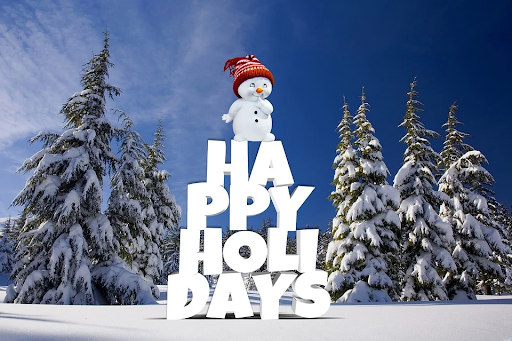
Seeing is Believing (or is it?)
With many different winter holidays coming up, I wanted to reflect on how we think about these holidays and our relation to each other. These holidays mean different things to different cultures. Here in the U.S. many people look forward to Thanksgiving and Christmas. But there are lots of other holidays that are celebrated here and around the world. Here are just a few examples: Kwanzaa (Pan-African), Hanukkah (Jewish), Bodhi Day (Buddhist), Las Posadas (Latin America), Boxing Day (Canada), Ōmisoka (Japan), or even Kramer’s favorite, Festivus. Some people here in the U.S. think we should only use the greeting “Merry Christmas”, but “Happy Holidays” could be a more inclusive greeting. It’s all in how you look at it.
Different people and cultures have different perspectives and part of our spiritual practice, as Buddhists, is being humble about our own perceptions. At the 74th NW District Buddhist Convention in September, Sensei Koichi Mizushima gave a presentation “Seeing is Believing” that points to the importance of noticing the limitations of our own personal perspectives. He points out that our limited perspective is a weakness that we all share. It’s also something we can work on for the new year.
We often use various phrases about how our own eyes can’t be wrong. We might say any of the following: “I saw it with my own eyes.” “Seeing is believing.” “It was an eyewitness account.” Sensei Koichi points out that our eyes see things, events, people from a certain perspective, but maybe another perspective reveals something totally different. We need to remember to think about another point of view.
Buddhism teaches that we should “see things as they truly are.” That might be very difficult for us foolish beings (bonbu). Can we really see things as they truly are? Our human egos have a way of inserting themselves into our perspective of what we see. Sensei Koichi’s presentation offers several examples of how seeing things from our own viewpoint can lead to disagreements. By examining things from another point of view, you might find out that you are totally wrong. (Be sure to watch the video in for the car accident example.)
Here’s another illustration of perspective. What do you see in this picture?
At first, you might see two fish swimming in water. But don’t stop with the two fish. Expand your vision beyond the two fish. Do you see a face?
We might all be looking at the same picture, but different things jump out at us, depending on our perspective. At first glance, we may notice only one thing. By examining the situation a little longer, other details become clearer. We should remember that we need to be mindful of the many causes and conditions that are working all around us. If you forget to consider different points of view and refuse to change your perspective, you could easily get into an argument with a friend.
It isn’t easy to see things as they truly are, especially if you’re a foolish being which we know we all are. We can’t rely on what we see at first, or even second, glance. We have to be able to open our minds, think outside the box, think about other possibilities before we come to a conclusion. We have to be willing to change our minds if someone shows us another possibility. Slowing down and thinking mindfully is part of our path as Shin Buddhists. We have to acknowledge that we can’t know it all.
We are foolish beings, full of blind passions. We are limited beings, surrounded by Infinite Wisdom and Compassion, and accepted just as we are. What better gift is that knowledge?
I wish you happy holidays, whatever you celebrate, and may we all look forward to a better year ahead—no matter our point of view.
NAMO AMIDA BUTSU
Rev. Kathy Chatterton, Assistant Minister



